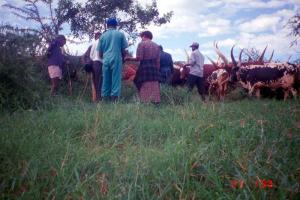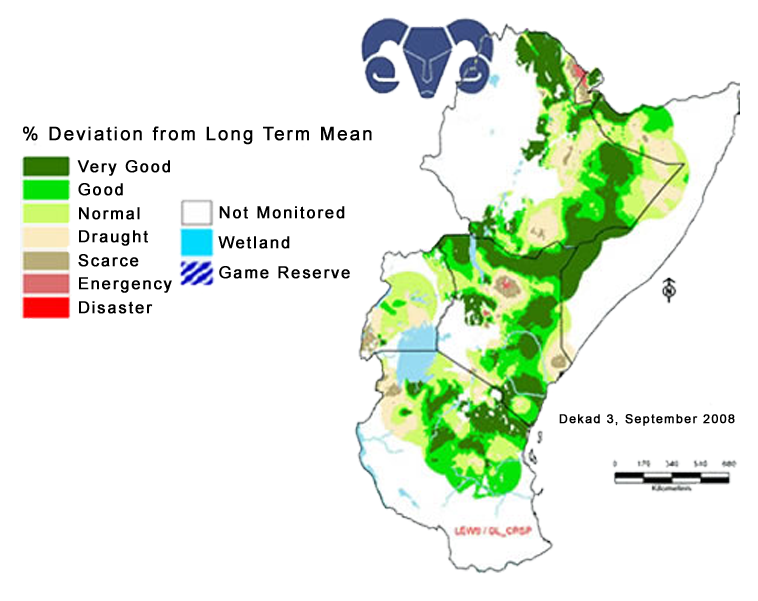
East Africa LEWS: Livestock Early Warning System
Understanding and communicating the emergence of drought — allowing pastoral communities to cope with a rapidly changing environment
Striking a balance

The delicate balance between selecting and maintaining a stocking rate that meets the short-term economic goals needed for ranch or pastoral household survival versus one that sustains long-term livestock carrying capacity has long dominated the decision-making process of livestock producers worldwide. This process is driven by the level of human needs of the decision-maker in relation to the level of risk an individual is willing to undertake under any livelihood.
With emerging problems associated with the increasing population, erratic climatic patterns with a higher frequency of drought, limited marketing opportunities, changing land tenure patterns, rising social conflict, limited water supply, and greater incidences of disease transmission, the traditional coping strategies of farmers, ranchers and pastoralists have become inappropriate. More uncertainties require new innovations in characterizing, monitoring, analyzing and communicating the emergence of drought to allow pastoral communities to cope with a rapidly changing environment.
East Africa LEWS: A collaborative solution

In collaboration with National Agricultural Research System in Kenya, Ethiopia, Uganda and Tanzania, scientists at Texas A&M University funded by USAID (1997-2003) through the Global Livestock Collaborative Research Support Program developed the Livestock Early Warning System (LEWS).
The LEWS was designed to provide an early warning system for monitoring rangeland forage conditions, livestock nutrition and health for maintaining the food security of pastoralists. The program framework is an integral part of the existing system for drought and famine in pastoral areas of Ethiopia, Djibouti, Somaliland, Kenya, Uganda, and Tanzania. The development and implementation of LEWS include spatial characterization, the establishment of monitoring sites, biophysical modeling, model analysis, and field verification and automation of information dissemination.
The central thrust of the LEWS project is to provide information on impending drought insufficient lead-time to allow the government, NGOs and pastoral communities to react to the conditions in a timely manner to prevent resource degradation and loss of assets. Timely decision making by livestock owners concerning the availability of forage supply, movement, destocking, and restocking of livestock will be valuable for sustainable livestock production in eastern Africa.
The indigenous knowledge of the pastoral societies regarding range and livestock is much more effective if they can have access to near real-time information on impending forage shortages for livestock and location of forage supplies. This minimizes conflict during periods of restrictive conditions. A combination of this indigenous knowledge and modern science is used by decision-makers to formulate clear mitigation strategies to reduce risk from extremes of weather conditions.
The project contributes to this noble venture by generating country-specific forage situation and deviation status reports updated every 10 days, a monthly advisory for Kenya, Tanzania, Ethiopia and Uganda, and a regional forecast report for the same countries. These reports are posted via e-mail to an array of users that include government agencies, NGOs, UN agencies, and livestock stakeholder groups.
